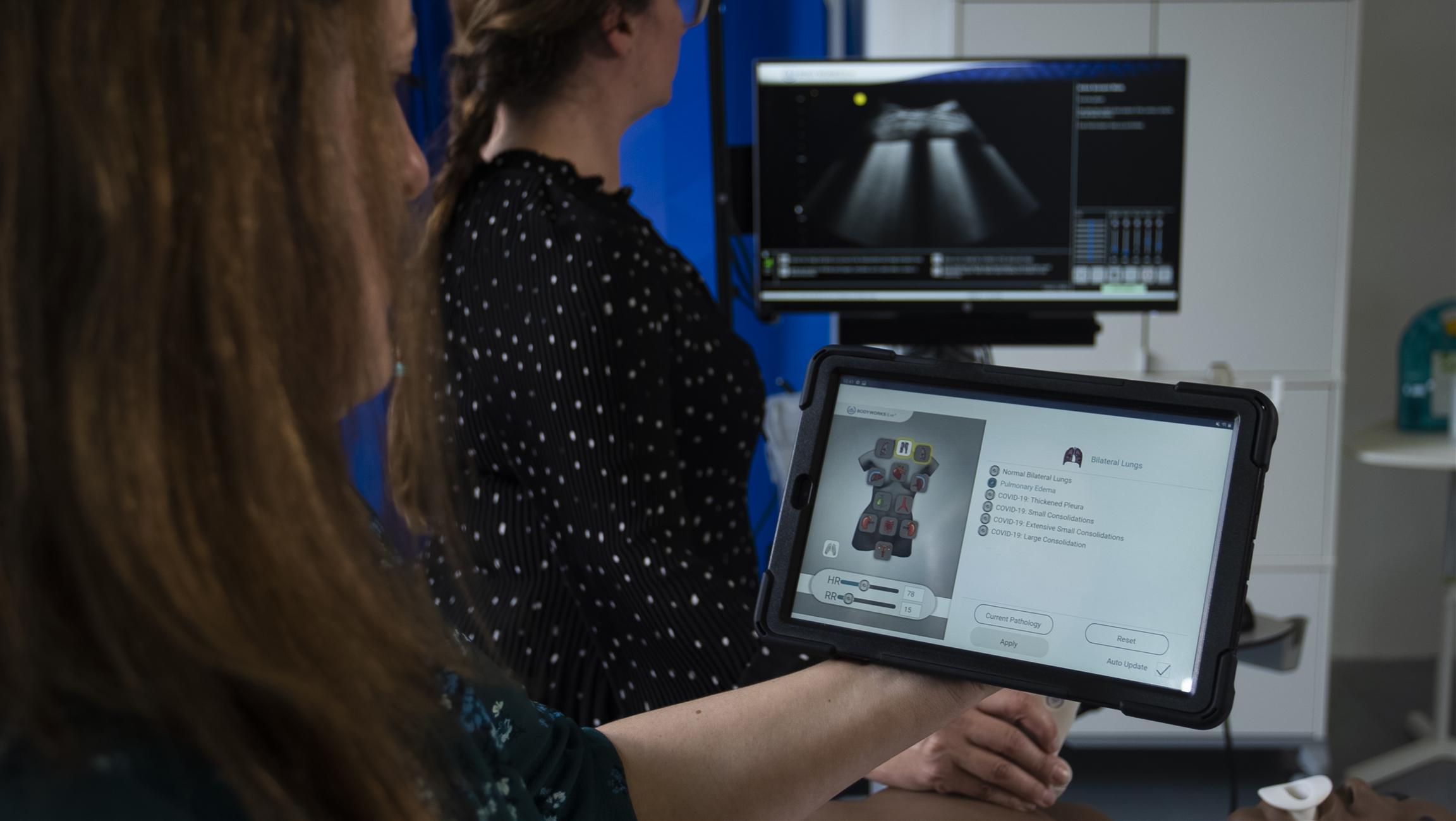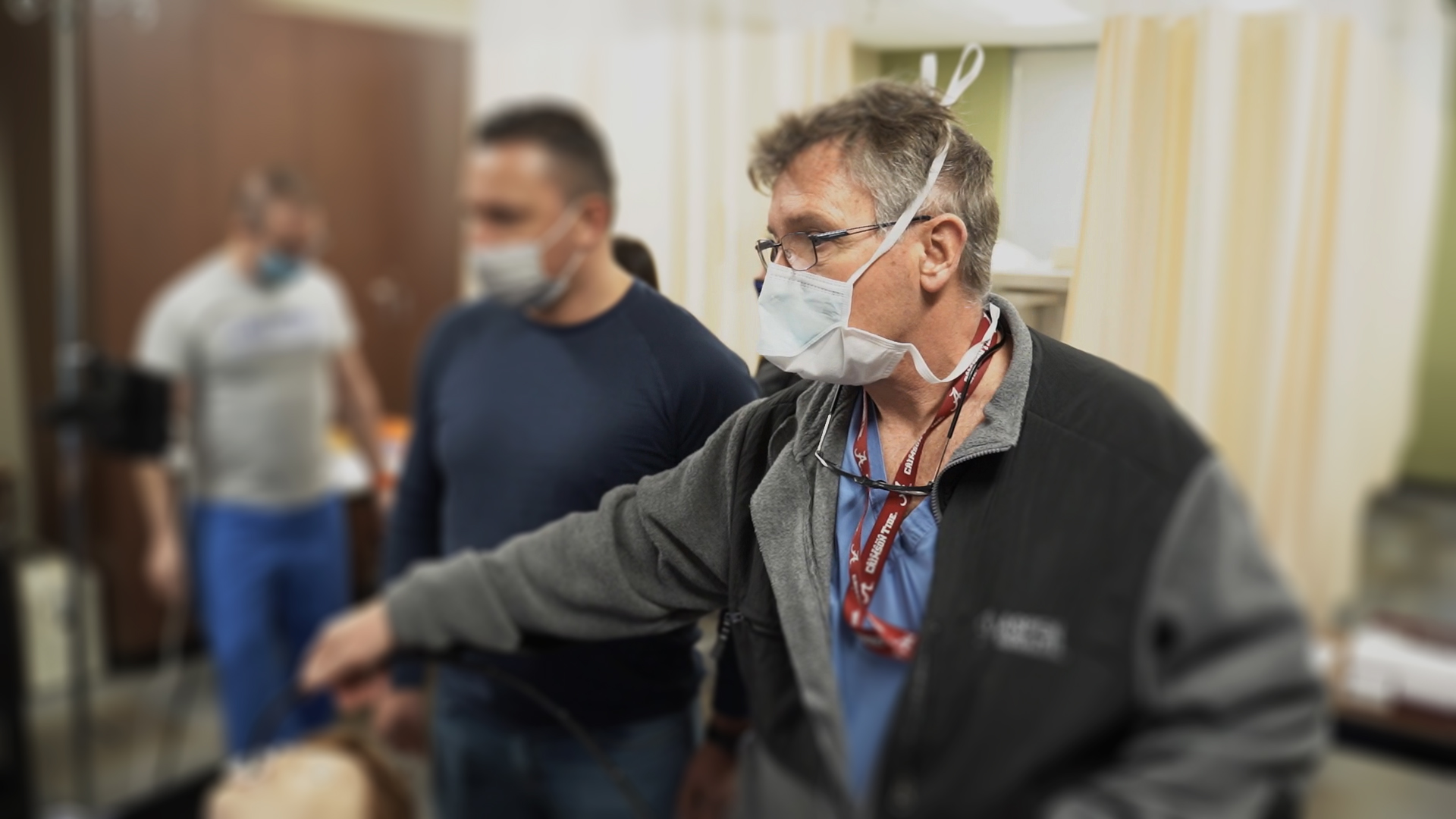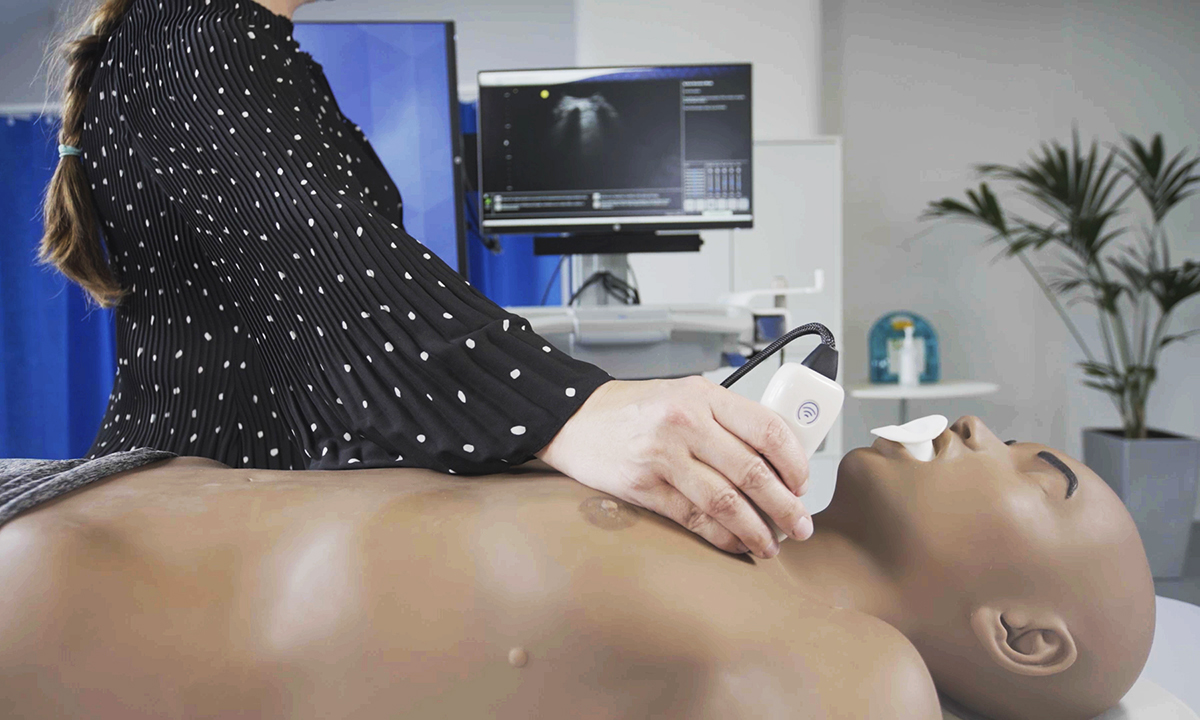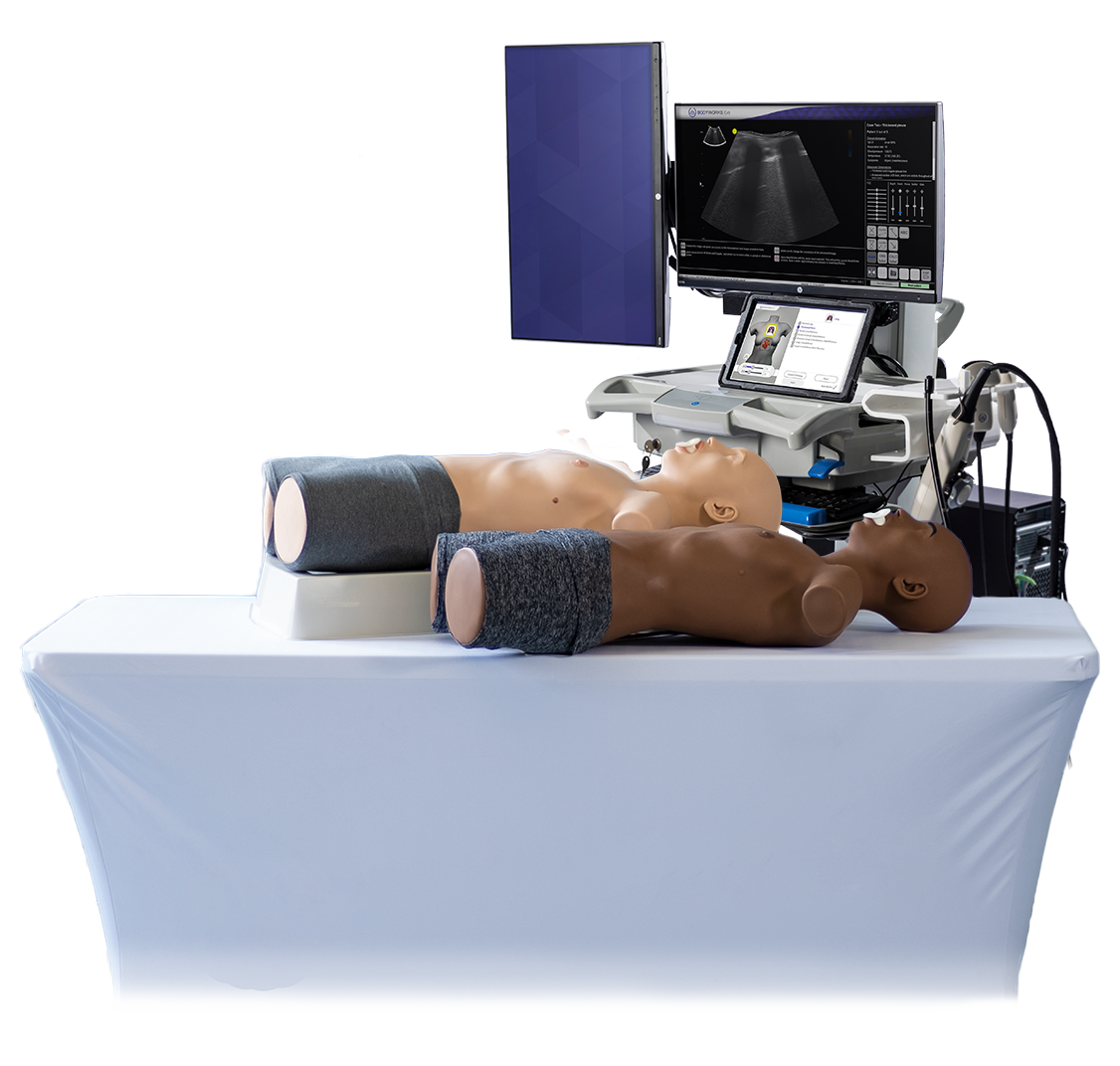
Dr. Shields, DNP, CRNA discusses the changing landscape of PoCUS in CRNA education
Point-of-Care Ultrasound (PoCUS) is now part of Certified Registered Nurse Anesthetist (CRNA) graduation requirements, with the Council on Accreditation (COA) adding PoCUS to the school curriculum in 2022. But CRNA programs are having to adapt with limited structure and resources. We spoke to John Shields, DNP, CRNA; about how PoCUS is changing the landscape of CRNA education and clinical practice.
“it’s an extension of what we use ultrasound for” explained Dr Shields. “CRNAs already use ultrasound for starting IV catheters, arterial lines, and central lines, as well as placing regional anesthesia and blocks, so it’s not like ultrasound is something they’ve never seen before. And with the advent of handhelds, the use of ultrasound in our day-to-day practice is now just a natural extension of what we do.”
John Shields is a cardiovascular and thoracic CRNA with over 30 years of clinical and leadership experience, with publications including the AANA Journal, Journal of Cardiovascular and Thoracic Anesthesia, Anesthesia and Analgesia and Nursing Clinics of North America. Currently practicing at Vanderbilt Heart and Vascular Institute, and faculty at Emory and Middle Tennessee School of Anesthesia, Dr. Shields also provides courses for healthcare professionals across the USA including sonographers, emergency room physicians, helicopter rescue teams, and nurse midwives through POCUSLab.
Shields explained how PoCUS can completely change the clinical management of a patient. “There’s a lot of things that you can’t really tell from a stethoscope or a physical exam. With the addition of PoCUS, instead of trying to elicit information from a history and stethoscope alone, I can pull a handheld probe out and in about 8 seconds guide my drug selection and dose.”
“For example, I could have a patient that’s been in an unusual heart rhythm for about a month, hasn’t been seen by a cardiologist yet but he’s been waiting to have a procedure done. I’ll stick a probe on him, and his heart function may have gone from normal to very abnormal. And so, we use different drugs to manage blood pressure throughout the operation, because now we know he has abnormal heart function. Knowing this information is a game changer because it allows us to take much better care of our patients.”
“I’ve had patients with poor oxygen saturation preoperatively, and I’ve stuck a probe on them and quickly found that they have some fluid around their lungs or a pleural effusion, or even heart failure, and that information can change your anesthesia from conscious sedation to a more controlled airway like intubation. So, it’s just a natural extension of your assessment skills.”

Adoption of a PoCUS curriculum for CRNAs
In 2022, the Council on Accreditation added the requirement for PoCUS experience into CRNA programs, but currently without discrete scans or specific number. In addition, the American Association of Nurse Anesthesiology (AANA) has issued a position statement documenting the key areas of PoCUS relevant to CRNAs. Dr Shields explained how he feels this will impact CRNA education.
“The incorporation of PoCUS into CRNA practice is evolving but has several barriers. In 2022 point-of-care ultrasound became a mandatory component of CRNA programs, but there was no ‘you’ve got to include these components’. Based on the position statement from the AANA, sooner or later CRNA programs are going to need to start teaching at least five basic things, including airway, gastric, cardiac, FATE, and FAST. To this end, schools will eventually have a more structured approach requiring a combination of didactic and clinical training.”
Dr. Shields went on to explain how ultrasound simulation will play a vital part in training the next generation, providing a safe, comprehensive teaching solution, without the pressures of patient management. “What I found is that people have no trouble putting a probe on a person’s hand or an arm to look for a vessel, but when it comes to putting something on the chest wall, taking somebody’s shirt off, putting a probe on a colleague or a friend to take a look at the stomach or the heart, it’s very awkward. Learning how to control the probe and make the movements is very clumsy, so having a low-stakes thing like a simulator is huge in learning how to manipulate the probe. You don’t mind touching a simulator and you’re not going to hurt a simulator. You’re not going to push too hard on a simulator. And the HeartWorks Simulator that shows the 3D model of the heart and where the probe is, and what the beam does, that it’s a slice instead of a volume, it can take weeks off the training time. I work with sonographers here in town, and the Intelligent Ultrasound simulator dramatically accelerates the training.”
“Along with the low-stakes learning format for CRNA students, the simulators offer different clinical pathologies that hopefully you’re not going to see on your patient day-to-day. And with the BodyWorks simulator, you can instantly change the pathology to show ‘normal’ and ‘abnormal’. The typical response is “Oh yeah” or “oh, that’s what that is” because they can see the change in a split second, and it helps the learning stick. In this manner, they learn by all methods including reading, visual, and hands-on. At Middle Tennessee School of Anesthesia, we doubled the scores on a standardized TEE exam using the simulator compared to a 10% increase with just readings and videos.”

Supporting programs to teach PoCUS
John Shields partnered with Intelligent Ultrasound to write an eLearn program, to support healthcare professionals learning PoCUS with the HeartWorks simulator. The IU Academy course was written to help learning programs adapt their curriculum to include PoCUS, with a particular focus on the areas required by CRNAs in daily practice.
Dr. Shields explained how using an eLearn can support programs to implement PoCUS into their curriculum “If your faculty haven’t used point-of-care ultrasound a lot themselves, and they graduated before it became part of the curriculum, they’re likely to be very uncomfortable teaching something that they have not had much exposure to. So, the eLearn course is something that they can use in their program almost immediately. The program is written by a CRNA that understands the role of point-of-care ultrasound in anesthesia, as well as understanding the curriculum that they teach. So, it’s a very convenient fill-in for people that do not have sonographers or CRNAs that are confident in PoCUS available to teach.”
Intelligent Ultrasound simulators are available in a range of packages to complement CRNA learning programs including combined Cardiac and PoCUS simulators, on-system assessment modules, and eLearn-inclusive packages.
Hi-fidelity ultrasound simulators for Point-of-Care Ultrasound (PoCUS) used in critical care, intensive care and emergency medicine.

Hi-fidelity ultrasound simulator for Transesophageal and Transthoracic Echocardiography
(TTE, TEE & 3D).


